Affiliate disclosure: This post may contain affiliate links. Please see our Privacy Policy.
Hawthorn syrup is a delicious herbal remedy for heart health, and it’s also delicious in drinks and desserts.
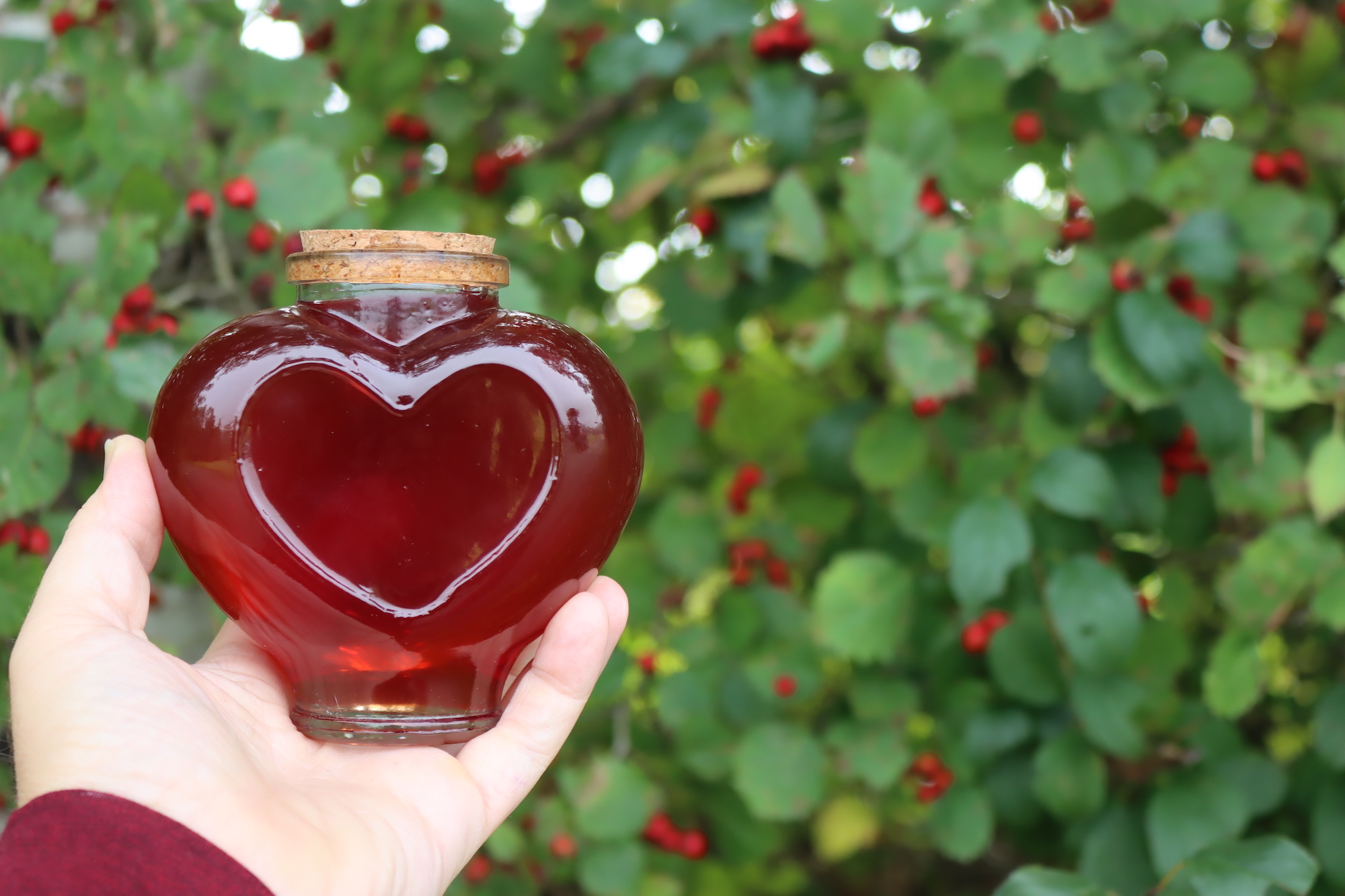
Hawthorn berries are small, red fruits that grow on thorny shrubs or trees, often found in hedgerows or as wild-growing trees in gardens. These berries ripen in late summer to early autumn and are full of tiny seeds.
While the berries themselves can be a bit tart and astringent when eaten raw, they transform beautifully when made into syrup, creating a smooth, subtly sweet liquid perfect use as is as a heart tonic, or added to drinks or desserts.
Hawthorn syrup has long been used in traditional medicine, particularly for its potential to support heart health and circulation. The berries are rich in flavonoids, antioxidants, and vitamin C, all of which contribute to their heart-healthy reputation.
I usually harvest hawthorn berries in the wild, and they’re abundant here in the northeast. If you’re curious about proper identification in the wild, you can read my guide to foraging hawthorn. The berries are also easy to get from herbal supply shops, where they sell dried hawthorn berries.
(I know, they call them berries for some reason. They’re actually little fruits that look like mini apples, and they’re realted closely to rose hips. Not really berries at all.)

Benefits of Hawthorn Syrup
Hawthorn berries are highly regarded for their potential to promote cardiovascular health.
Traditionally, they have been used to improve blood flow, lower blood pressure, and support overall heart function. Hawthorn is also thought to help with digestive issues and anxiety, making it a wonderful herbal remedy.
Making hawthorn syrup is an excellent way to incorporate the benefits of this lovely plant into your everyday routine, especially as the colder months approach.
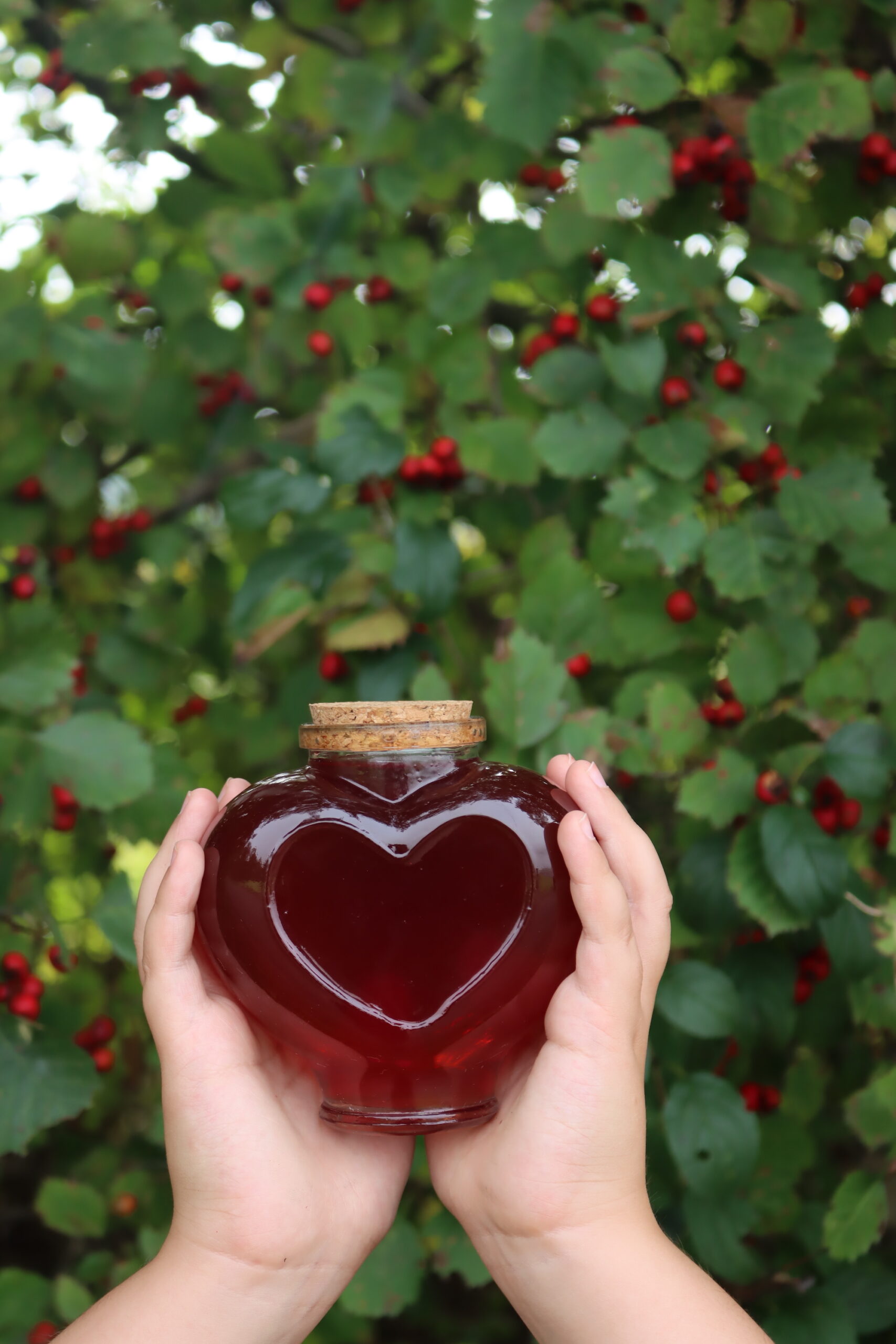
Ingredients for Hawthorn Syrup
To make hawthorn syrup, you’ll need a few basic ingredients that come together to create a flavorful and nutritious syrup. The basic proportions follow the same 3:2:1 ratio used for other syrups: 3 parts water, 2 parts hawthorn berries, and 1 part sugar or honey, depending on your taste. For a small batch, you’ll need:
- 500 grams fresh hawthorn berries (or 250 grams dried hawthorn berries)
- 250 grams sugar (or an equal amount of honey, if you prefer)
- 750 ml water (or about 3 cups)
Fresh hawthorn berries yield a brighter flavor, while dried berries provide a more concentrated taste. If you want a syrup that has more complexity, feel free to substitute the sugar with honey. Honey adds a floral, rich sweetness, enhancing the natural flavor of the hawthorn berries, while sugar results in a more neutral, clean syrup. You can also add a splash of apple cider vinegar (about 2-3 tablespoons) to balance the sweetness, giving the syrup a slight tang that complements its fruitiness.
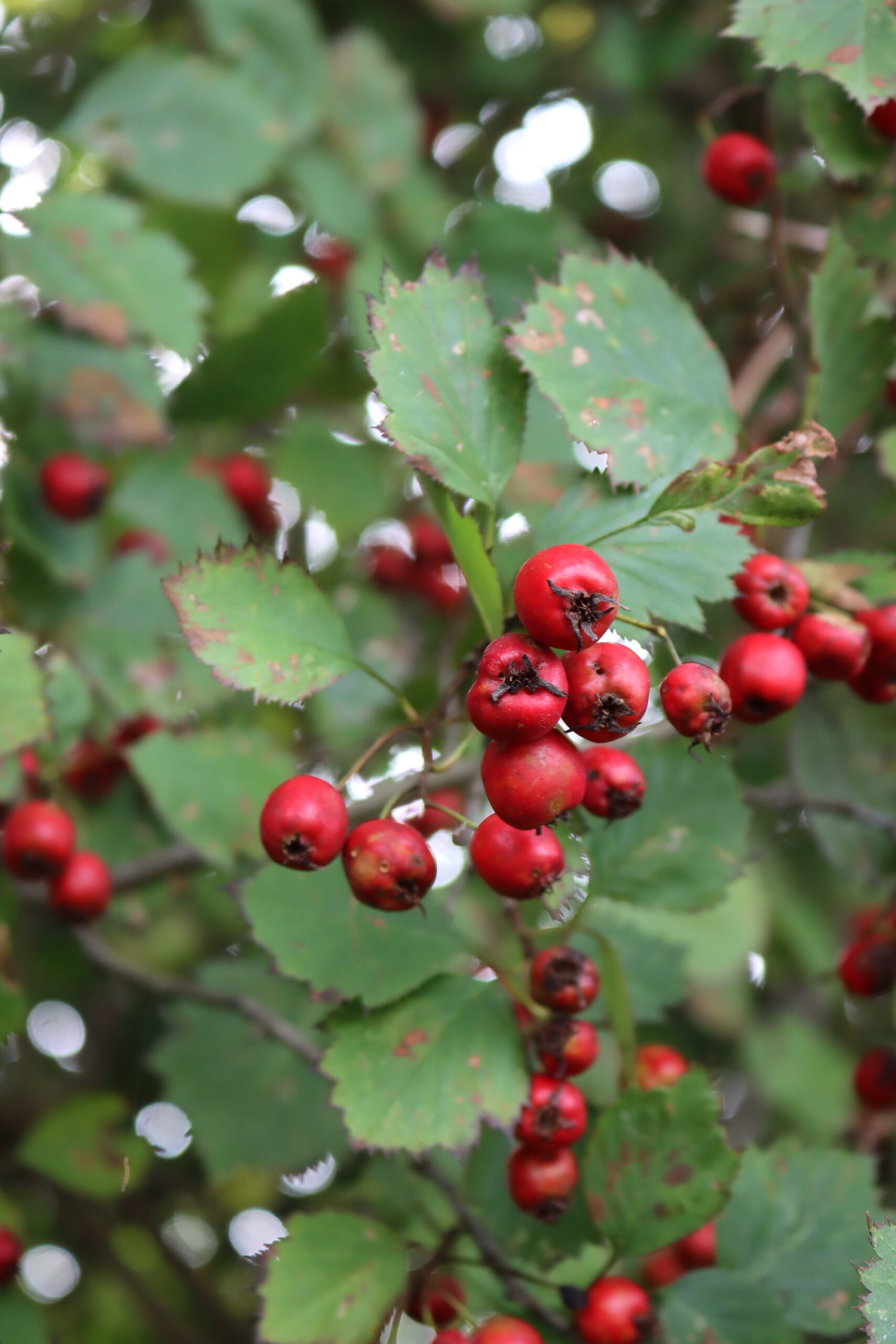
How to Make Hawthorn Syrup
Start by preparing your hawthorn berries. Wash them thoroughly and remove any stems or leaves, as they can be tough. If you’re using dried berries, there’s no need to rinse them; just skip this step. Next, chop the berries slightly, or crush them with a mortar and pestle, to help release their natural juices during cooking.
Place the prepared berries in a large pot and add 750 ml of water. Bring the mixture to a boil, then reduce the heat and allow it to simmer for about 20 minutes, or until the berries soften and the water has reduced by about half. You’ll know the mixture is ready when it becomes a concentrated, deep red infusion.
After the berries have softened and the liquid has reduced, it’s time to strain the syrup. Using a fine mesh sieve lined with muslin or cheesecloth, strain the liquid into a clean container, making sure to remove all the seeds and pulp. It’s important to strain the mixture thoroughly, as the seeds and the small hairs in the berries can be irritating if consumed. If necessary, strain it a second time to ensure the syrup is smooth and clear.
Once you have your hawthorn liquid, measure it out. For every 500 ml of strained liquid, add 250 grams of sugar or honey, depending on your preference. Stir gently to dissolve the sugar, and then bring the mixture to a boil. Allow it to boil for about 3 minutes, stirring occasionally, to help the syrup thicken slightly.
After boiling, pour the hot syrup into sterilized bottles or jars. Store it in a cool, dark place, and it should last for up to 6 months. Once opened, keep it in the refrigerator for a few weeks.
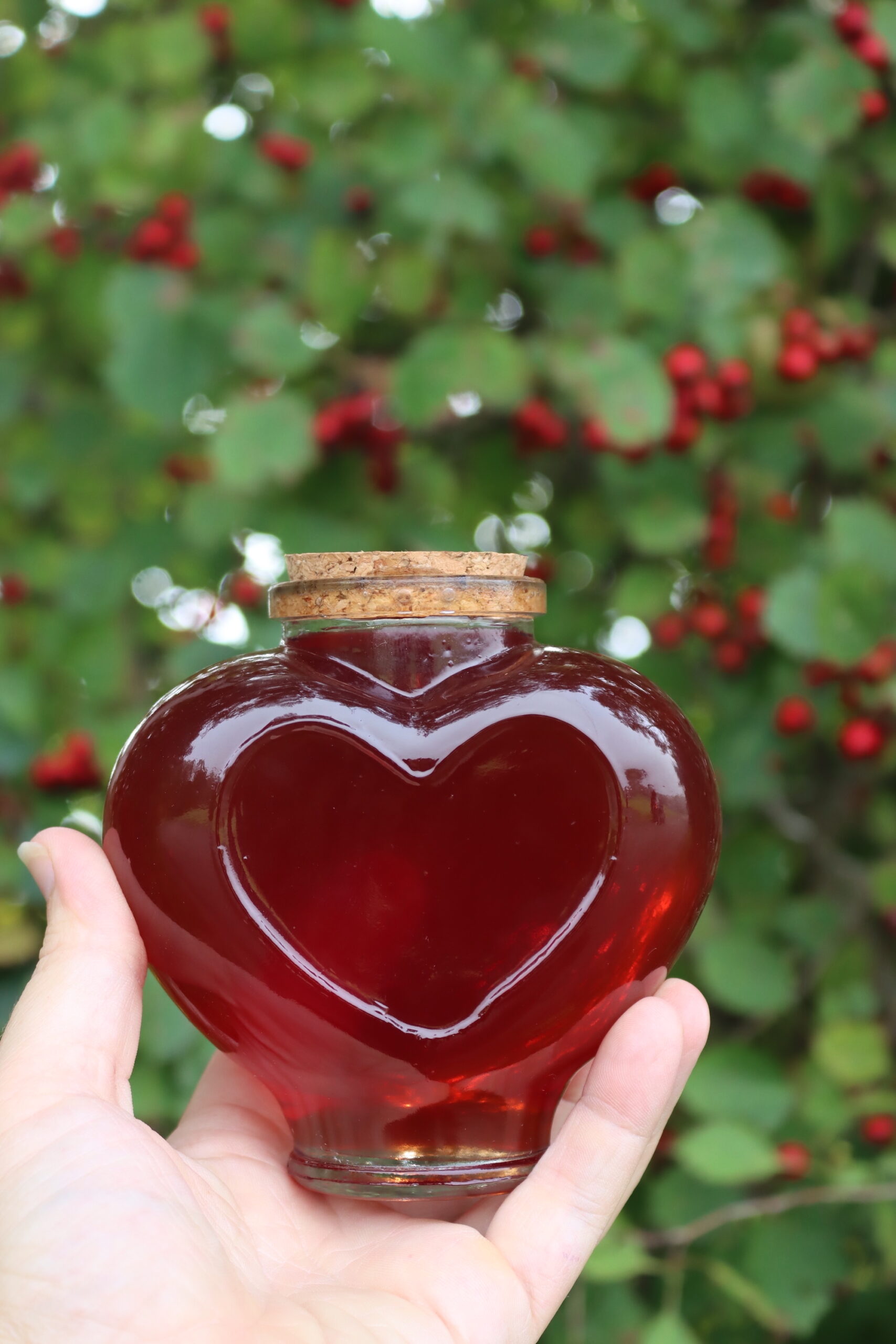
How to Use Hawthorn Syrup
Once you’ve made your hawthorn syrup, there are many creative ways to incorporate it into your daily routine. Here are a few ideas for how to use this healthful syrup:
For Medicinal Use
Support Heart Health: Hawthorn syrup is often used as a tonic to promote cardiovascular health. Take 1-2 tablespoons per day as part of your wellness routine, especially during the colder months when supporting circulation and heart health is important.
Digestive Aid: Hawthorn has mild digestive properties and can help soothe an upset stomach. A spoonful of syrup in warm water can make a pleasant, calming drink.
For Culinary Use
As a Sweetener: Use hawthorn syrup in place of regular sugar or maple syrup. It’s wonderful drizzled over pancakes, waffles, or French toast for a seasonal twist.
Dessert Topping: Pour the syrup over ice cream, yogurt, or fresh fruit to add a natural sweetness with a fruity kick.
In Cocktails: Hawthorn syrup makes an excellent addition to cocktails. Stir it into gin, whiskey, or rum for a unique, autumn-inspired drink, or mix it with sparkling water for a light and refreshing beverage.
Hot Drinks: Add a spoonful of hawthorn syrup to hot tea or a hot toddy for a warming, comforting beverage that’s perfect for cold weather.

Storage & Shelf Life
Hawthorn syrup is best stored in the refrigerator, where it will keep for several weeks once opened. If stored in a cool, dark place and properly sealed, it can last up to 6 months. As with other syrups, hawthorn syrup may thicken over time, particularly if refrigerated. If it becomes too thick, simply warm it up to return it to a syrup consistency.
Other Syrup Recipes to Consider…
If you tried this Hawthorn Syrup or any other recipe on my blog, please leave a 🌟 star rating and let me know how it went in the comments!
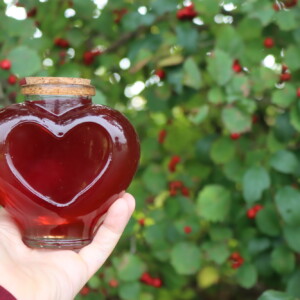
Hawthorn Syrup
Ingredients
- 4 cups Fresh Hawthorn Berries, 500 g fresh, or 250 grams dried hawthorn berries
- 1 1/4 cups Sugar, or an equal amount of honey
- 3 cups Water
Instructions
- Wash the fresh berries and remove any stems or leaves. If you’re using dried berries, you can skip this step.
- Place the prepared berries in a large pot with 750 ml of water. Bring to a boil, then reduce the heat and simmer for 20 minutes, or until the berries are soft and the liquid is reduced by half.
- Strain the liquid through a fine mesh sieve or cheesecloth, removing all the seeds and pulp. Strain twice for a smooth syrup.
- Add 250 grams of sugar or honey. Heat gently over medium heat until the sugar dissolves, then bring the mixture to a boil for 3 minutes.
- Pour the hot syrup into sterilized bottles or jars. Seal and store in a cool, dark place for up to 6 months. Once opened, refrigerate for up to a few weeks.
Notes
Nutrition
Nutrition information is automatically calculated, so should only be used as an approximation.
Hawthorn Recipes
Looking for more ways to use hawthorn?
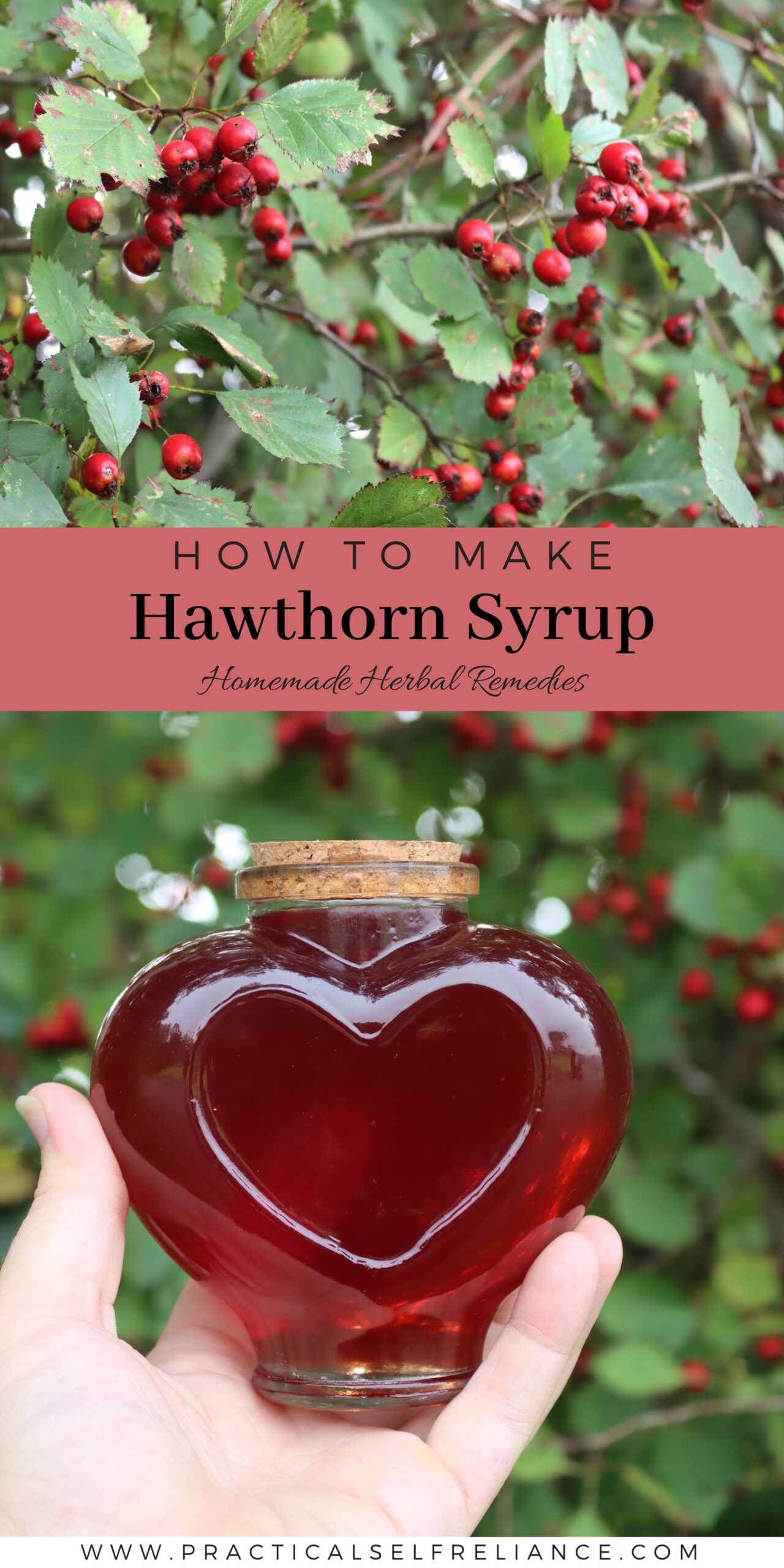
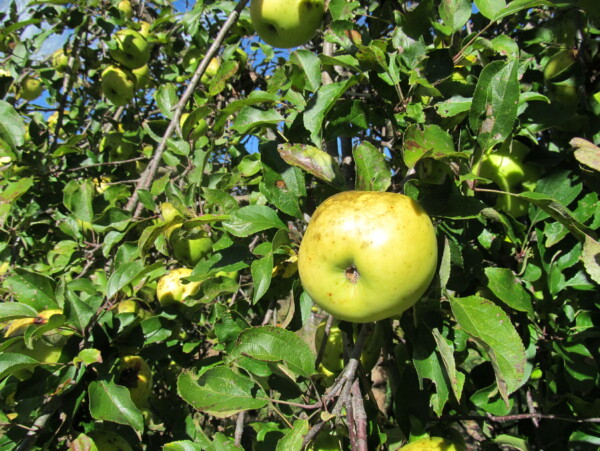

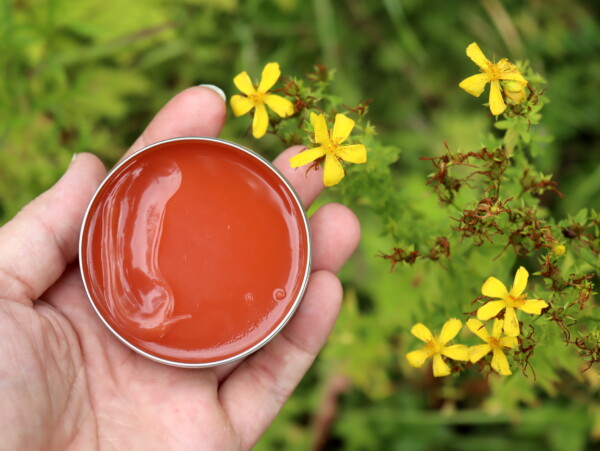
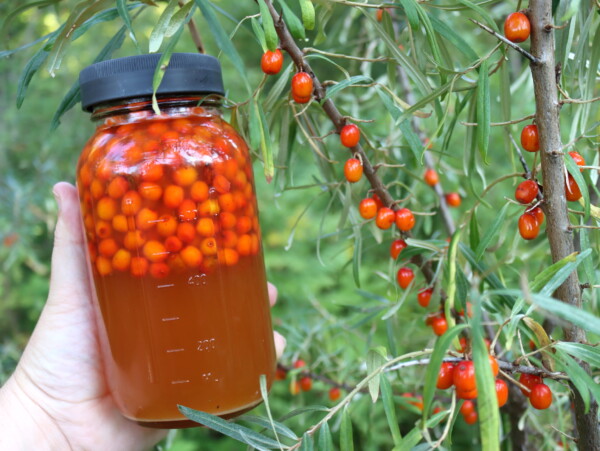
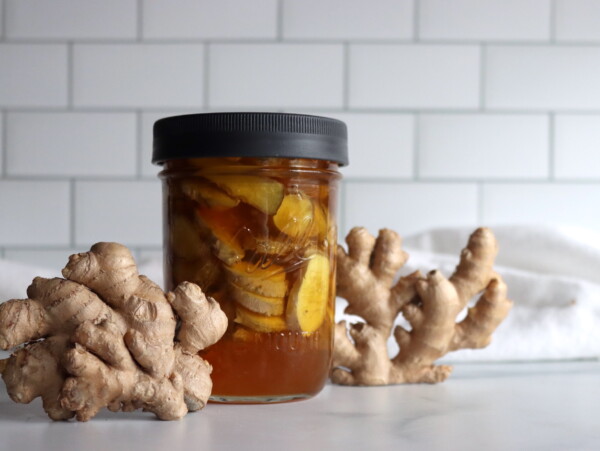
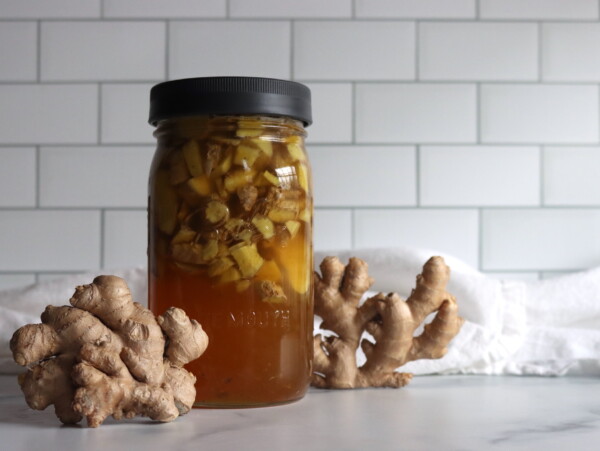
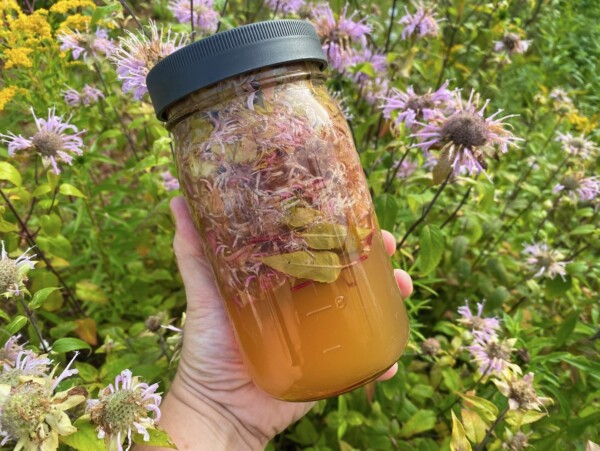










Thanks for this recipe. It’s a good alternative for hawthorn berry tea for cardiac. The only thing I would say, respectfully, is that you suggested using honey or sugar, but then you directed boiling. Honey should never be heated over 100° F — never hotter than the hive — or it dies and becomes toxic. Just saying.